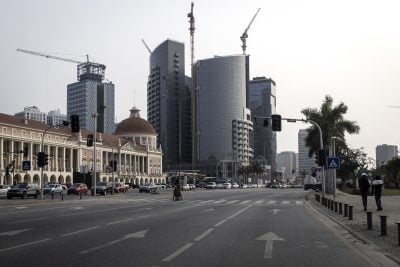Why did the economies of Asia boom for most of the last quarter of a century? Why did the southern European economies boom in the 1950s and 1960s? Why did Latin America boom in the early years of the last century?
Of course there are many reasons for these periods of very rapid economic growth – booms that transformed rather simple and undeveloped economies into modern and complex ones, with all the skills and infrastructure needed to support such economies. But the simplest explanation is one of the most persuasive. These economies had more young people than old people – and where there are young people there is often rapid economic growth.
In countries that are relatively poor, people usually have a lot of children. In relative poverty, children are an economic resource – a source of wages, and an insurance policy against old age. Mortality rates are higher in poor countries, so more people die in childhood – the hard fact is that one reason why adults produce more children is because they expect to lose some.
But in countries that are relatively rich, people have fewer children. Instead of being seen as an economic resource, children become an economic burden. The children of the rich require expensive education, and the expensive healthcare that makes it less likely that those children will die, and all the goods and services that rich and comfortable children demand.
So the demographic pattern is for there to be more young people than old people in poorer countries, and the other way around in richer countries. But this very pattern contains the seeds of change – because large numbers of young people in an economy are also associated with economic growth, and increasing wealth.
Even though the very poorest countries have high mortality rates, as healthcare gradually improves people begin to live longer, and the economy becomes more productive with large numbers of young people working for relatively low wages, while the small numbers of old people in the economy require less financial support than would be the case in rich countries.
This is the growth moment, when economies emerge from poverty and suddenly become very attractive places to set up businesses simply because of their human resources.
This is what has happened to India and to China in recent decades. And this is what is happening now in Africa. The pattern can be seen clearly in Africa’s demographic ‘dependency ratios’ – that is, the number of young productive workers in the economy compared to the number of older unproductive people who need to be supported by those of working age.
In fact, Africa is the only continent that will see its working age population grow during the next thirty years. The number of 15-24 year olds will continue to rise at least until 2040, and there will be up to 15 working age people for every pensioner in sub-Saharan Africa as late as 2030. Even by 2050, there will still be 10 working age people for every pensioner.
These dependency ratios are much more favourable for growth than the ratios in advanced economies, where an ever-smaller working age population has to support an ever-growing pensioner population.
Want to continue reading? Subscribe today.
You've read all your free articles for this month! Subscribe now to enjoy full access to our content.
Digital Monthly
£8.00 / month
Receive full unlimited access to our articles, opinions, podcasts and more.
Digital Yearly
£70.00 / year
Our best value offer - save £26 and gain access to all of our digital content for an entire year!
 Sign in with Google
Sign in with Google 


